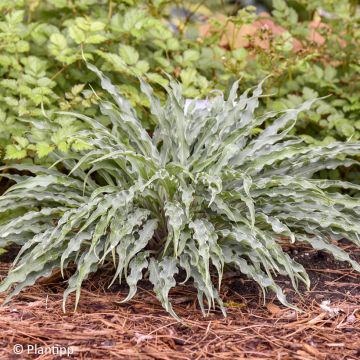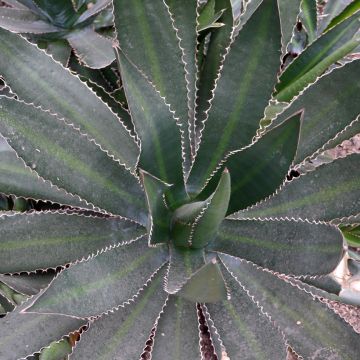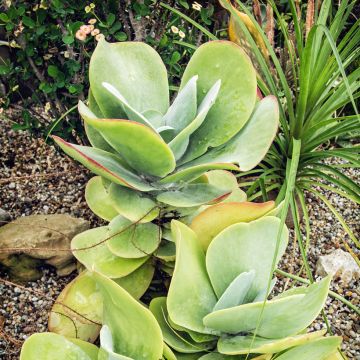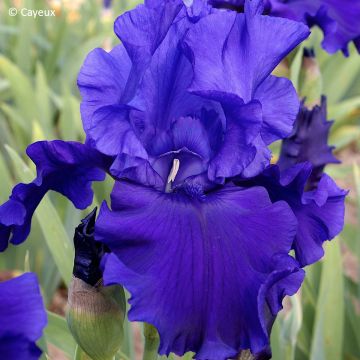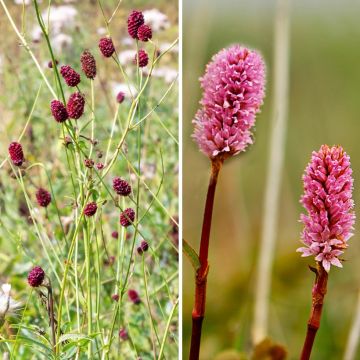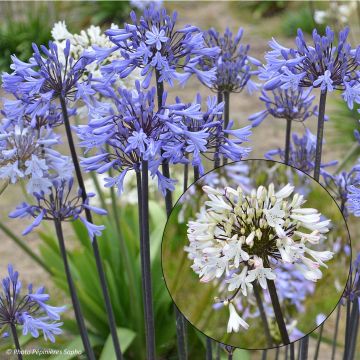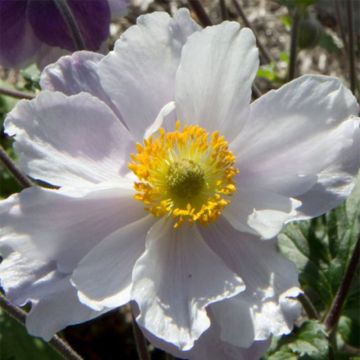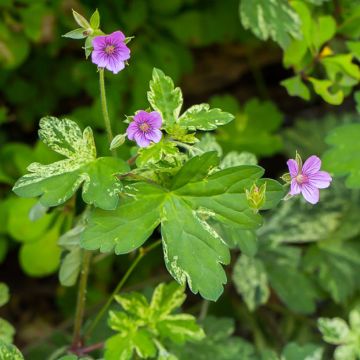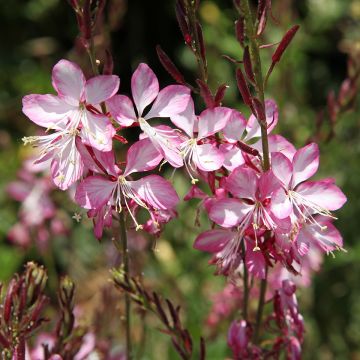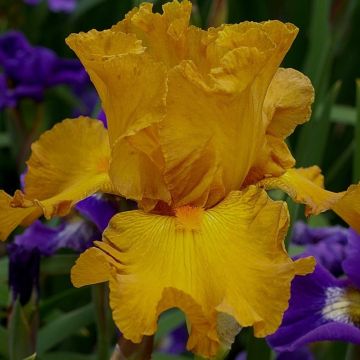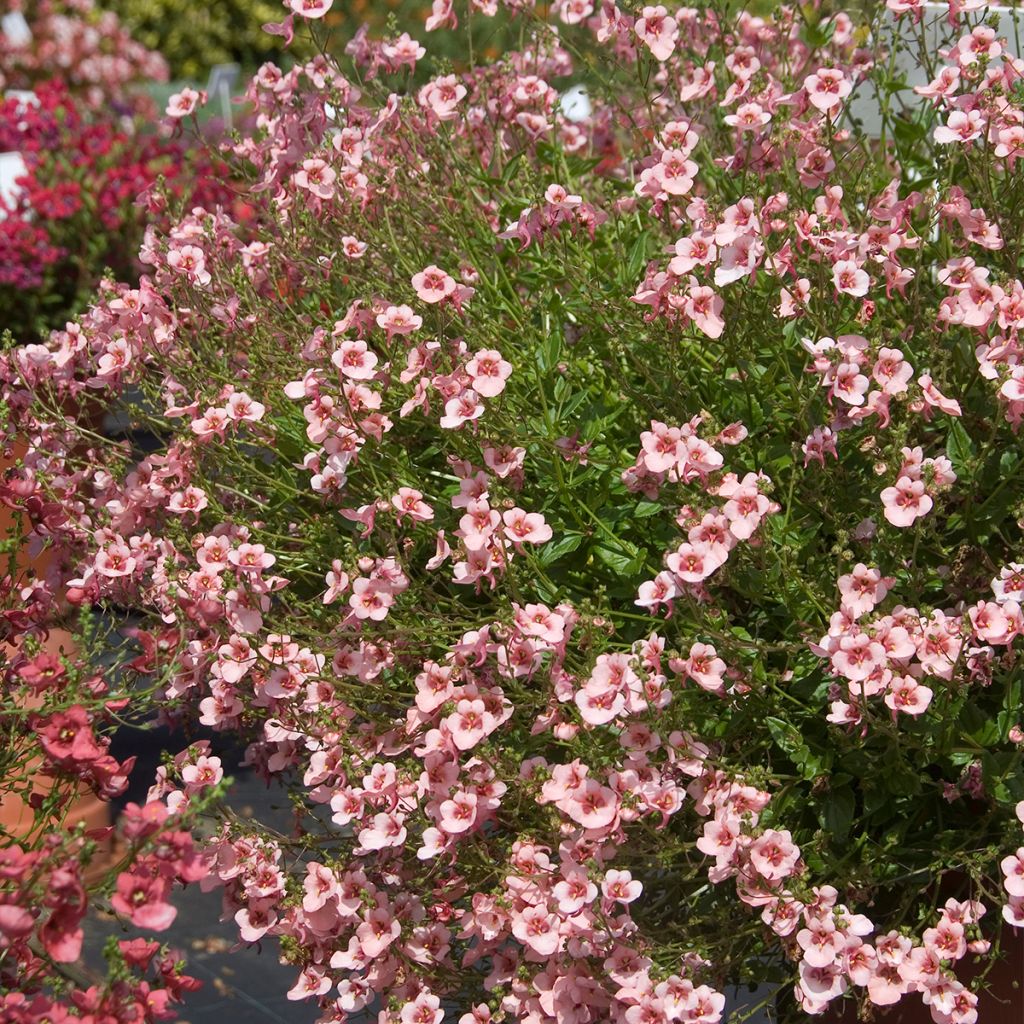

Diascia vigilis (= elegans) - Diascie
Diascia vigilis
Diascia vigilis
Twinspur
Special offer!
Receive a €20 voucher for any order over €90 (excluding delivery costs, credit notes, and plastic-free options)!
1- Add your favorite plants to your cart.
2- Once you have reached €90, confirm your order (you can even choose the delivery date!).
3- As soon as your order is shipped, you will receive an email containing your voucher code, valid for 3 months (90 days).
Your voucher is unique and can only be used once, for any order with a minimum value of €20, excluding delivery costs.
Can be combined with other current offers, non-divisible and non-refundable.
Why not try an alternative variety in stock?
View all →This plant carries a 12 months recovery warranty
More information
We guarantee the quality of our plants for a full growing cycle, and will replace at our expense any plant that fails to recover under normal climatic and planting conditions.

Would this plant suit my garden?
Set up your Plantfit profile →
Description
Diascia vigilis or elegans is a vigorous trailing Diascia with pale salmon-pink flowers and a purple throat. These flowers are larger than usual for a Diascia. Reliable and easy to grow in a light, not too dry soil, this beautiful perennial flowers for several months, from summer to autumn. Plant it in a large rockery if winters are mild in your region, as this highly decorative species can withstand short freezing temperatures of around -6 to -7°C (21.2 to 19.4°F). Elsewhere, it will look stunning in a container or hanging basket!
Diascia elegans belongs to the Scrophulariaceae family. It is a botanic species native to the Drakensberg Mountains in South Africa. This perennial plant with stoloniferous stems (capable of rooting upon contact with the ground) has a wide, slightly trailing habit, forming a clump that reaches a minimum height of 40 cm (16in) and a width of 50 cm (20in). Flowering generally starts in June and lasts until October. The flowers form large clusters of pearly pink flowers with a hint of salmon, and a yellow throat maculated with purple, extending downwards with two spurs. The diameter of the flowers can reach 3 cm (1in). These flowers somewhat resemble snapdragons. The stems of this perennial bear oval leaves, 3 to 4 cm (1 to 2in) long, toothed, with a slightly fleshy texture, bright green in colour, and more or less villous. The foliage is semi-evergreen in winter. In cold regions, this Diascia will be grown as an annual.
Diascia vigilis is a superb patio or balcony plant that can be grown in the ground in coastal gardens. There are plenty of ideas for companion planting with this remarkable species. In a perennial bed, it looks wonderful alongside agastaches, nepetas, penstemons, perennial geraniums... It is also a lovely companion for pink, mauve, or white roses. Annuals such as poppies, centaureas, and love-in-a-mist also pair well with its generous pink flowers.
Report an error about the product description
Flowering
Foliage
Plant habit
Botanical data
Diascia
vigilis
Scrophulariaceae
Twinspur
South Africa
Other Perennials A to Z
View all →Planting and care
Plant Diascia vigilis iin a fertile soil which is moist to occasionally dry, humus-rich, and well-drained in winter. This plant dislikes waterlogged ground. It is useful to pinch the terminal shoots to accentuate the bushy habit. Cut back the old stems after flowering. This Diascia is hardy up to about -8°C (17.6°F), in a well-drained soil and during relatively short periods of frost. In winter, outside mild climate regions, it is preferable to shelter this tender plant in a cold greenhouse or an unheated conservatory.
Planting period
Intended location
Care
Planting & care advice
This item has not been reviewed yet - be the first to leave a review about it.
Similar products
Haven't found what you were looking for?
Hardiness is the lowest winter temperature a plant can endure without suffering serious damage or even dying. However, hardiness is affected by location (a sheltered area, such as a patio), protection (winter cover) and soil type (hardiness is improved by well-drained soil).

Photo Sharing Terms & Conditions
In order to encourage gardeners to interact and share their experiences, Promesse de fleurs offers various media enabling content to be uploaded onto its Site - in particular via the ‘Photo sharing’ module.
The User agrees to refrain from:
- Posting any content that is illegal, prejudicial, insulting, racist, inciteful to hatred, revisionist, contrary to public decency, that infringes on privacy or on the privacy rights of third parties, in particular the publicity rights of persons and goods, intellectual property rights, or the right to privacy.
- Submitting content on behalf of a third party;
- Impersonate the identity of a third party and/or publish any personal information about a third party;
In general, the User undertakes to refrain from any unethical behaviour.
All Content (in particular text, comments, files, images, photos, videos, creative works, etc.), which may be subject to property or intellectual property rights, image or other private rights, shall remain the property of the User, subject to the limited rights granted by the terms of the licence granted by Promesse de fleurs as stated below. Users are at liberty to publish or not to publish such Content on the Site, notably via the ‘Photo Sharing’ facility, and accept that this Content shall be made public and freely accessible, notably on the Internet.
Users further acknowledge, undertake to have ,and guarantee that they hold all necessary rights and permissions to publish such material on the Site, in particular with regard to the legislation in force pertaining to any privacy, property, intellectual property, image, or contractual rights, or rights of any other nature. By publishing such Content on the Site, Users acknowledge accepting full liability as publishers of the Content within the meaning of the law, and grant Promesse de fleurs, free of charge, an inclusive, worldwide licence for the said Content for the entire duration of its publication, including all reproduction, representation, up/downloading, displaying, performing, transmission, and storage rights.
Users also grant permission for their name to be linked to the Content and accept that this link may not always be made available.
By engaging in posting material, Users consent to their Content becoming automatically accessible on the Internet, in particular on other sites and/or blogs and/or web pages of the Promesse de fleurs site, including in particular social pages and the Promesse de fleurs catalogue.
Users may secure the removal of entrusted content free of charge by issuing a simple request via our contact form.
The flowering period indicated on our website applies to countries and regions located in USDA zone 8 (France, the United Kingdom, Ireland, the Netherlands, etc.)
It will vary according to where you live:
- In zones 9 to 10 (Italy, Spain, Greece, etc.), flowering will occur about 2 to 4 weeks earlier.
- In zones 6 to 7 (Germany, Poland, Slovenia, and lower mountainous regions), flowering will be delayed by 2 to 3 weeks.
- In zone 5 (Central Europe, Scandinavia), blooming will be delayed by 3 to 5 weeks.
In temperate climates, pruning of spring-flowering shrubs (forsythia, spireas, etc.) should be done just after flowering.
Pruning of summer-flowering shrubs (Indian Lilac, Perovskia, etc.) can be done in winter or spring.
In cold regions as well as with frost-sensitive plants, avoid pruning too early when severe frosts may still occur.
The planting period indicated on our website applies to countries and regions located in USDA zone 8 (France, United Kingdom, Ireland, Netherlands).
It will vary according to where you live:
- In Mediterranean zones (Marseille, Madrid, Milan, etc.), autumn and winter are the best planting periods.
- In continental zones (Strasbourg, Munich, Vienna, etc.), delay planting by 2 to 3 weeks in spring and bring it forward by 2 to 4 weeks in autumn.
- In mountainous regions (the Alps, Pyrenees, Carpathians, etc.), it is best to plant in late spring (May-June) or late summer (August-September).
The harvesting period indicated on our website applies to countries and regions in USDA zone 8 (France, England, Ireland, the Netherlands).
In colder areas (Scandinavia, Poland, Austria...) fruit and vegetable harvests are likely to be delayed by 3-4 weeks.
In warmer areas (Italy, Spain, Greece, etc.), harvesting will probably take place earlier, depending on weather conditions.
The sowing periods indicated on our website apply to countries and regions within USDA Zone 8 (France, UK, Ireland, Netherlands).
In colder areas (Scandinavia, Poland, Austria...), delay any outdoor sowing by 3-4 weeks, or sow under glass.
In warmer climes (Italy, Spain, Greece, etc.), bring outdoor sowing forward by a few weeks.



































